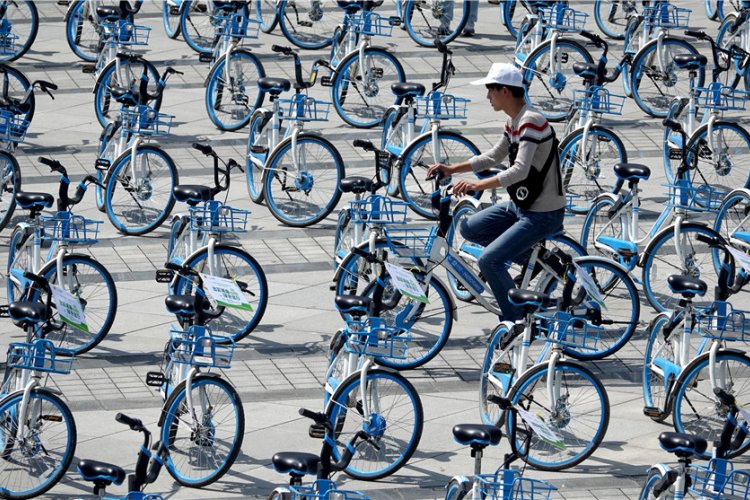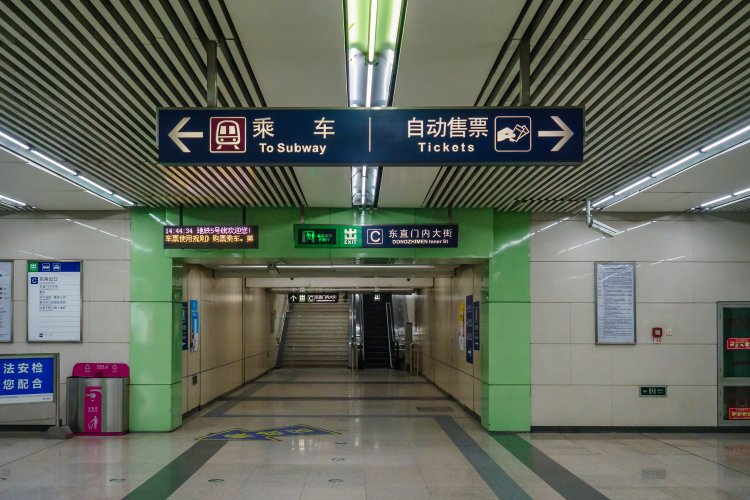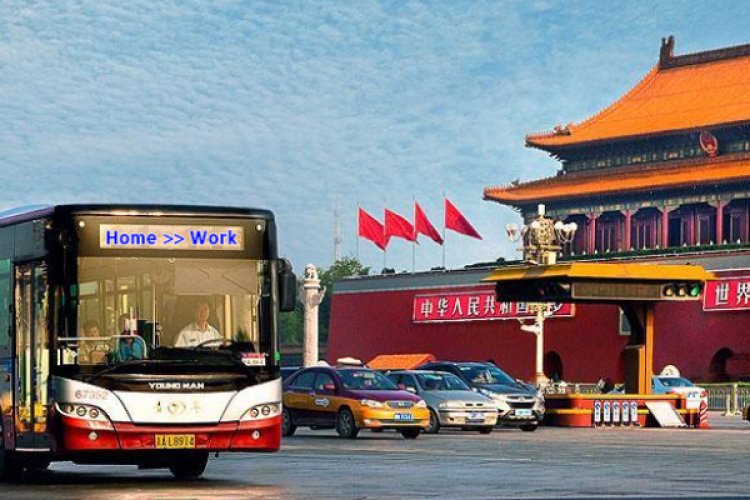Station to Station: Taking the Bus in Beijing
Given Beijing’s perpetual gridlock, cycling or taking the subway are the best ways to ensure that you arrive on time. That being said, newcomers shouldn’t discount the humble city bus. On a sunny day, sitting next to the window with a breeze going through your hair is a lovely way to explore the city. In many ways, Beijing’s bus network is more developed than the subway and is more convenient for reaching remote locations. Here’s a basic guide to taking the bus, from purchasing a smart card to finding your way around the city.
Bus Fare
Buses in Beijing have two fee structures: a fixed rate of RMB 1 for a one-way trip and a variable, distance-based rate. Depending on the bus route, the latter system costs either RMB 1 for the first 12km and RMB 0.50 for every 5km after that or RMB 2 for the first 10km and RMB 1 for every 5km after than that. There are two ways to pay the fare: cash or smart card. There’s a 60 percent discount if you pay with a smart card; this knocks down the price from RMB 1 to RMB 0.40 for a one-way trip.

The bus and subway use the same yikatong (一卡通) card, which can be purchased at any subway station. The card itself requires a RMB 20 deposit, which can be reclaimed upon return – but only with the original receipt. As a bonus, the yikatong can be used at shared bicycle stations, in phone booths, at select food retailers (McDonald’s, KFC, Yonghe King, Weiduomei), and in certain convenience stores (Jingkelong, Wu Mart, Watson’s, Wal-Mart).
To top up the card, use one of the recharge machines at any subway station; the instructions are available in English and Chinese. Alternatively, go to the ticket booth and give the clerk your card and the amount in cash you want to charge it with.
All routes with distance-based fares and some routes with fixed-rate fares have a ticket clerk on board to sell tickets and provide change for purchases. All passengers getting off the bus will be asked to show their ticket or swipe their smart card. On buses without a ticket clerk, the fare costs RMB 1 payable in cash or card.
Passengers carrying large suitcases may need to pay for two fares. All children under 1.2m ride for free if accompanied by an adult. Retirees and blind people also ride for free.
Navigating the City
If you don’t read or write Chinese, Google Maps will probably be your best bet when iot comes to navigational tools. However, both the app and the website tend to be slow and unreliable here. If you’re willing to learn a bit of Chinese or muddle through the following steps, Baidu Maps and BJ Bus are much better for figuring out the quickest route from point A to B. Baidu Maps has a more user-friendly interface, so that’s the one we’re using for the example below.

Step 1
This is the Baidu Maps home page. The red circle indicates the search bar, where you can enter your destination in pinyin or Chinese characters. Baidu Maps will auto complete the address as you type.

Step 2
Press “enter” or click the gray button that says “百度一下” to the right of the search bar to bring up the search results, indicated here by the red circle.

Step 3
Click the second tab labeled “bus” (公交) below the search bar. Another input field will appear. Type your starting address in Chinese characters or pinyin, then hit “enter” again.

Step 4
On the left of the screen, you’ll see several bus routes sorted by commute time. On the map, you’ll see the bus trajectory in blue. Optionally, you may refine your search options (see next step).

Step 5a
The green box indicates “departure time” (出发时间). Click on the calendar icon to pick a different departure date and the clock icon to pick a different departure time. The orange box contains “transportation tools” (交通工具). If you click on the drop-down menu, you have the option of excluding the subway from your itinerary. Finally, the tabs in the purple box control how your search results are sorted. The first is “by quickest route” (较快捷), the second is “minimal bus transfers” (少换乘), and the third is “minimal walking” (少步行).
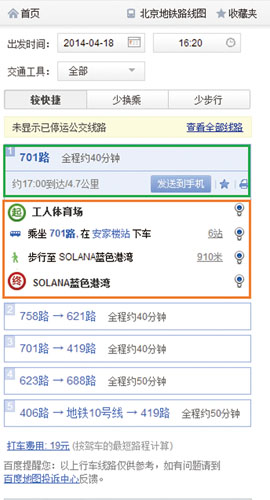
Step 5b
Moving on to the itinerary itself, the green box shows the route number (701), estimated travel time (40 minutes), estimated time of arrival (17:00), and approximate distance (4.7km). The orange box contains the directions. The first line shows the starting point. The second line shows the bus number (701), station to get off at (安家楼站), and number of stops (six). The third line shows how much you’ll need to walk after you get off the bus (910m). The last line shows the name of your destination.
Baidu Maps also has an app called 百度地图 that replicates this interface and provides a great tool for those with 3G (for more information on setting up 3G access, see p34). Within China, Baidu Maps is generally faster and more accurate than Google Maps.
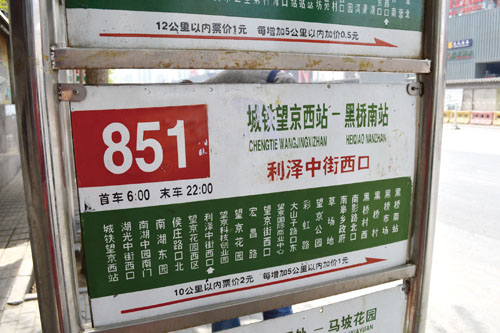
Getting on the Bus
The photo above shows a typical bus sign with the route number, station names in vertical Chinese characters, the times of the first and last buses, the terminus names, and the fare (RMB 2 for the first 10km, RMB 1 for every extra 5km after that). Bus signs can be confusing at first, but learn to pick out the information you need with a Chinese app like Pleco or do your homework beforehand using Baidu Maps.
In general, there’s a door at the front for passengers boarding the bus and a door at the back for passengers getting off the bus. Don’t enter via the exit doors unless you want to get an earful from the conductor or ticket clerk. Doors for getting on will have the character shang (上) or “up” and doors for exiting will have the character xia (下). On accordion buses, passengers board through the middle and disembark at the front or back.
Pay the fare by pressing your smart card against the surface reader located next to the driver, which will beep and show the amount left on your card. Paying cash? Just put the appropriate number of paper notes or coins into the fare box. Some buses require you to swipe your card only when you get on; others require you to swipe it when you get on and before you get off. The easiest way to tell? Check whether there’s a card reader at the exit; if there isn’t, you don’t have to swipe your card a second time.
Peak hours for traffic are from 8-9.30am and 5-7pm. The experience can be uncomfortable for the uninitiated, so we don’t suggest making your maiden voyage during these hours. Conductors and ticket clerks generally don’t speak English, so it’s best to know the name of your stop or have it written down Chinese. Each station is announced over the PA system, so you can listen for yours or count off the number of stops to your destination. Happy exploring!
This article originally appeared in the beijingkids Home & Relocation Guide 2014. To get your free copy, email distribution@truerun.com or view it online at Issuu.


